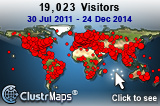There’s a buzz about vSphere 5 (apart from the rather odd changes to the licensing! 🙂 ) especially the changes being made to VMFS with VMFS5… I thought I would detail some of the different features that are being introduced:
- Support for LUN’s larger than 2TB, but using GPT
- 1MB block size, no need to pick the right size
- Over 130,000 files per data store support
- NAS, full file clone, fast file clone for linked clones now supported by VAAI!
- Dead space reclamation support in VAAI, allows storage arrays to de-allocate the blocks when a Virtual Machine is moved to a different data store
- Disk space and latency are used by Storage DRS to govern if a Virtual Machine needs to be migrated. It can also be used for automatic data store selection whilst incorporating load balancing processes – but this can be switched off if you want to use the storage vendors automated tiering
- 64TB! LUN support, without using extents
- Storage DRS (sDRS) can utilize clusters of data stores (of the same type) plus can use placement rules
- sDRS can evacuate Virtual Machines from data stores once they are put into maintenance mode
- Fast migration with storage vMotion through the use of mirrored writes to the source and destination VMDK’s, so only one copy is required
- Tag your storage through profile driven storage characteristic tags to allow Virtual Machines to be placed on mission critical storage, second tier or third tier, dependant on SLA’s put in place by the business
- VASA – vSphere Storage APIs – Storage Awareness allows storage vednors to expose the arrays capabilities to vCenter, raid level, disk type etc
- Virtual Machines with snaps and linked clones can now be storage vMotion’d
- FCoE Initiator now supported through software, but some dependencies on hardware there
Lots of advances there, especially liking the extra VAAI integrations which offload the storage based work to the storage array. One word of warning, best way to utilize VMFS5 is to just create a new data store and migrate your virtual machines onto it. You can convert current VMFS3 to 5 but you won’t get all the benefits of a native 5 VMFS.
More details to follow when I get time to type it up!


